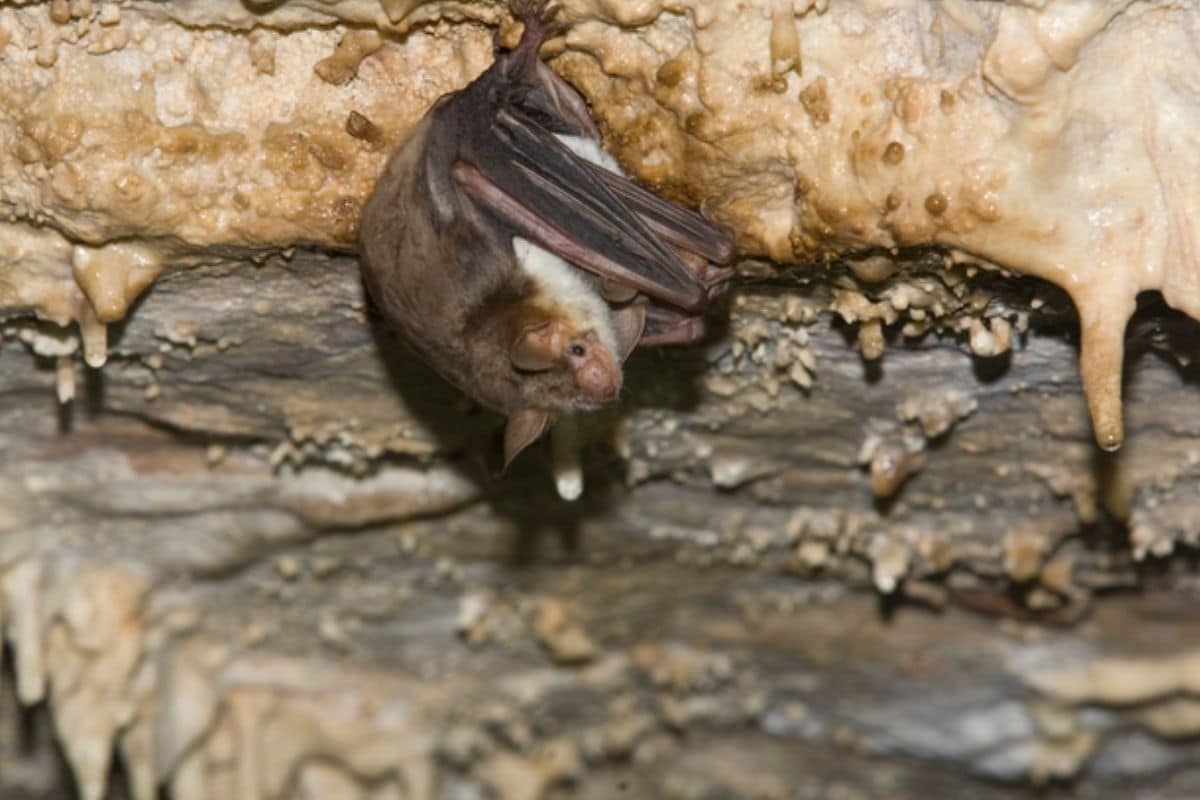

He’s going to buzz like a wasp.
When an owl has set its sights on a pale bat, the latter seems to be able to do little about it. At most he can try to run and hide, but there are not many other options. At least we thought so. Because scientists have now discovered that the bat has another tactic: it bluffs. And that by making a buzzing sound and pretending to be so much more dangerous than it actually is. And that works!
Batesian imitation
It is a classic example of so-called Batesian mimicry. “In Batesian mimicry, an unarmed species imitates an armed species to scare away predators,” said study researcher Danilo Russo. For example, flies, butterflies and snakes have previously been described that resemble poisonous counterparts in color and/or pattern, but are not poisonous themselves. However, for the first time, researchers can now identify a mammal that performs Batesian mimicry using the buzzing griffon bat. “Imagine a bat caught by a predator, but not yet killed. The buzzing sound can mislead the predator for a split second — and that’s enough to fly away.”
Previous research
The researchers actually discovered this clever tactic years ago when they tried to catch pale bats as part of a completely different study. “When we grabbed the bats to retrieve them from the net or to examine them, they buzzed like wasps,” Russo says. There was no time and space to find out why the bats made that special sound. But the issue continued to preoccupy Russo and colleagues. It resulted in a second study of these bats and a research article – published in the magazine Current Biology — in which the black-eared bat is identified as the first mammal to engage in Batesian mimicry.
In the research paper, researchers first describe the similarities between the buzzing of cornered griffon bats and the buzzing of stinging insects, such as hornets. And there turned out to be quite a few similarities. Particularly when the researchers adjusted the buzzing of the griffon bats and hornets so that we perceive the sounds as owls — key opponents of the griffon bats — do. In that case, the buzzing of the griffon bat resembled that of wasps even more strongly. And that indicates that it is even more difficult for owls than for us to distinguish the buzzing sounds of a harmless bat from those of a dangerous hornet.
Experiment
The researchers also looked into what the buzzing did to owls. They played various sounds – including the buzzing of the griffon bats and hornets, but also the sound of possible prey – to the owls. And generally speaking, they saw that the owls moved away from the speaker in response to the buzzing sounds, while in response to sounds from possible prey, they moved closer to the speaker.
According to the researchers, it indicates that owls don’t like stinging insects and that by mimicking the sound of these insects, the griffon bat can keep the owls at a distance. Why owls prefer not to go near stinging insects is unclear. It seems likely that it stems from a previous negative experience with wasps where the owls were stung. However, there is no hard evidence that such a collision is the basis of their reluctance.
special
According to the researchers, it is remarkable that bats threaten to mimic the sound of wasps – despite the fact that the bats, owls and wasps occur in the same area and therefore probably regularly bump into each other. “It is somewhat surprising that owls shape the acoustic behavior of bats through their own unpleasant experiences with stinging insects,” Russo says. “It is just one of countless examples that illustrate the beauty of evolutionary processes.”
Although the black-eared bat is the first mammal to be accused of Batesian mimicry, it most likely will not be the last. It is suspected that more bats use similar tactics to fend off predators.
Source material:
†These bats deter predators by buzzing like hornets– Cell Press (via Eurekalert)
Image at the top of this article: Marco Scalisi